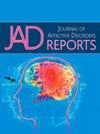Exploring the relationship between social demographic factors and anxiety in college students
Q3 Psychology
引用次数: 0
Abstract
Introduction
Untreated anxiety increases risk for depression and disruption in college matriculation. Thirty seven percent of college students experience anxiety, but the role of intersectional social identities in providing patient center support is unclear. We conducted a quantitative study of college students to identify the social identities salient to their anxiety risk to optimize mental health support post pandemic.
Methods
The GAD- 7 was administered online to 584 US college students from Fall 2020 to Fall 2021. A binary outcome indicated whether students experienced significant anxiety (GAD-7 score ≥15). Independent variables include race/ethnicity, biological sex, age, sports involvement, college level, relationship status, and social class. Descriptive statistics were computed using frequencies and proportions. Bivariate between each independent variable and the outcome of interest were examined using chi-square tests. Multivariate logistic regression was used to assess the strength of the relationships while controlling for all independent variables.
Results
The key finding is that lower socioeconomic class was associated with higher risk of anxiety.
Conclusion
While no significant interaction effect was seen with the other demographic variables, the high number of women in the study suggests that further investigation is needed into the intersectional effects of gender and class. Moreover, 76 % of participants reported not engaging in sport which suggests sport is an underutilized coping mechanism for reducing anxiety and can serve a possible intervention tool.
探讨社会人口学因素与大学生焦虑的关系
未经治疗的焦虑会增加抑郁和大学入学中断的风险。37%的大学生经历过焦虑,但交叉社会身份在提供患者中心支持方面的作用尚不清楚。我们对大学生进行了定量研究,以确定其焦虑风险的显著社会身份,以优化大流行后的心理健康支持。方法从2020年秋季到2021年秋季,对584名美国大学生进行GAD- 7在线测试。二值结局显示学生是否经历了显著的焦虑(GAD-7评分≥15)。自变量包括种族/民族、生理性别、年龄、体育活动、大学水平、关系状况和社会阶层。描述性统计使用频率和比例计算。使用卡方检验检验每个自变量和感兴趣的结果之间的双变量。在控制所有自变量的同时,使用多元逻辑回归来评估关系的强度。结果研究发现,社会经济阶层越低,焦虑风险越高。结论虽然与其他人口统计学变量没有明显的交互作用,但研究中女性的高数量表明,需要进一步调查性别和阶级的交叉效应。此外,76%的参与者报告不参加体育运动,这表明体育是一种未充分利用的应对机制,可以减少焦虑,并可以作为一种可能的干预工具。
本文章由计算机程序翻译,如有差异,请以英文原文为准。
求助全文
约1分钟内获得全文
求助全文
来源期刊

Journal of Affective Disorders Reports
Psychology-Clinical Psychology
CiteScore
3.80
自引率
0.00%
发文量
137
审稿时长
134 days
 求助内容:
求助内容: 应助结果提醒方式:
应助结果提醒方式:


